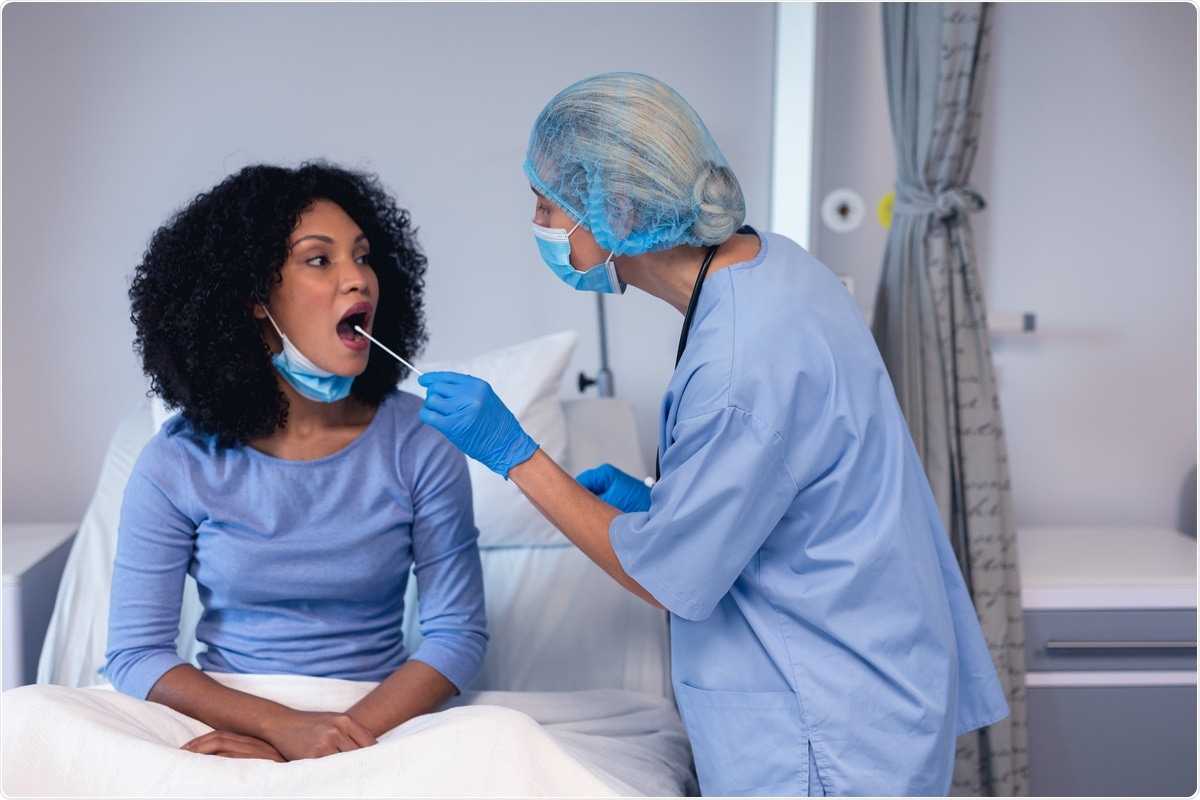Severe acute respiratory syndrome coronavirus 2 (SARS-CoV-2), the causative agent of the coronavirus disease 2019 (COVID-19) pandemic, gains entry into host cells through contact between projected droplets and the cells of the nose, oral cavity, or eyes. SARS-CoV-2 infectivity depends on the ability of the virus to enter host cells.
The virus binds to the host cell receptor, angiotensin-converting enzyme 2 (ACE2), which is abundantly expressed in the epithelial tissue that lines the respiratory tract; it is in this sense that SARS-CoV-2 is primarily considered a respiratory virus. The ACE2 receptor interacts with the viral spike protein, thereby facilitating entry into the cells.

Study: Oral Mucosa Could Be an Infectious Target of SARS-CoV-2. Image Credit: wavebreakmedia/Shutterstock
COVID-19 is associated with several clinical conditions, such as dysosmia and dysgeusia. Dysgeusia may result due to the effect of SARS-CoV-2 on the tastebuds of the tongue. A previous study suggested that the distribution of the SARS-CoV-2 virus in the oral cavity was thought to be in saliva. Still, recent research showed equal distribution of the virus in the gingival sulcus.
A recent study suggested that ACE2 receptors are expressed in oral tissues, making the oral cavity an important potential entry point of SARS-CoV-2 into the respiratory and gastrointestinal tracts. Thus, a recent study published in the journal Healthcare first reports the expression of ACE2 receptors in the human oral tissue that comprise the gingiva, tongue, and palate.
About the study
The current study involved twenty volunteers whose median age was 36 years, with an equal amount of males and females. The medical history of all the volunteers, along with smoking and alcohol consumption history, were recorded.
The expression of ACE2 in various oral cavity sites was evaluated by carrying out liquid-based cytology, which presents advantages over liquid-based cytology as there are fewer contaminants and fewer air-dried artifacts. Cells were collected from each participant's tongue, palate, and gingival sulcus and subjected to liquid-based cytology.
Study findings
The current study results indicate that with respect to site-specific cytology, the median number of cells collected from the tongue was 2129.0. Out of these cells, the median number of cells that were ACE2 receptor positive was 478.0, and the median ACE-2 receptor positive proportion was 18.2.
The median number of cells in the palate was 2597.5, out of which the median number of ACE2 receptor positive cells was 44.5, with the median ACE2 receptor proportion being 2.0. The median number of cells in the gingiva was 7923.5, out of which the median number of ACE2 receptor positive cells was 1323.4, with the ACE2 receptor positive proportion being 14.6.
The ACE2 expression values were tongue, 18.2 percent, gingiva, 14.6 percent, and palate, 2.0 percent. Thus, the study results showed that the expression of ACE2 was highest in the tongue, followed by gingiva and palate. The proportion of ACE2 was much higher in the gingiva and tongue than compared to the palate.
Background factors of the volunteers such as gender, alcohol consumption, and smoking were not associated with the distribution of ACE2 in the tongue, palate, or gingiva.
Ultimately, the findings indicate that the inflammatory gingival sulcus is a novel shedding route of SARS-CoV-2. The attachment of SARS-CoV-2 to the ACE2 receptors can be prevented through a special periodontal treatment by dental professionals that aims to decrease the ACE2 distribution in the gingival sulcus cells.
Conclusion
The current study indicates that the gingival sulcus can be a new point of entry for the SARS-CoV-2 virus due to the high expression of the ACE2 receptors. Although, the expression of ACE2 in the human oral cavity and their difference in distribution among different ethnicities still needs to be evaluated.
The use of liquid-based cytology in the study is advantageous as it is a useful and non-invasive method that can help evaluate important clinical topics.